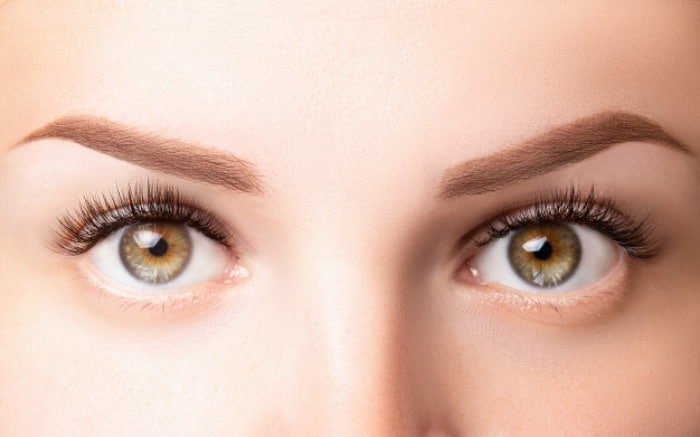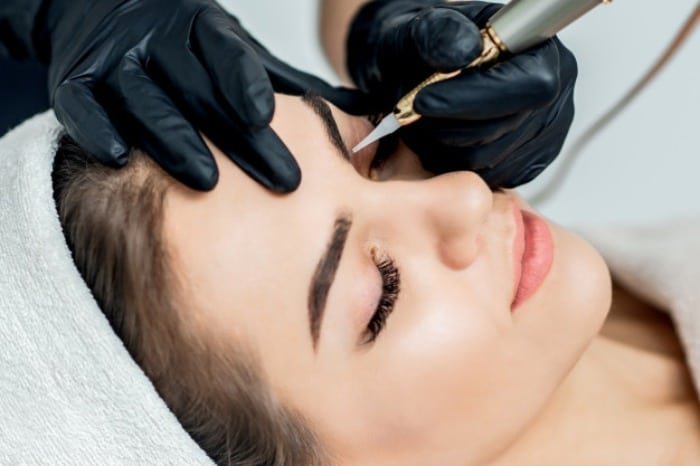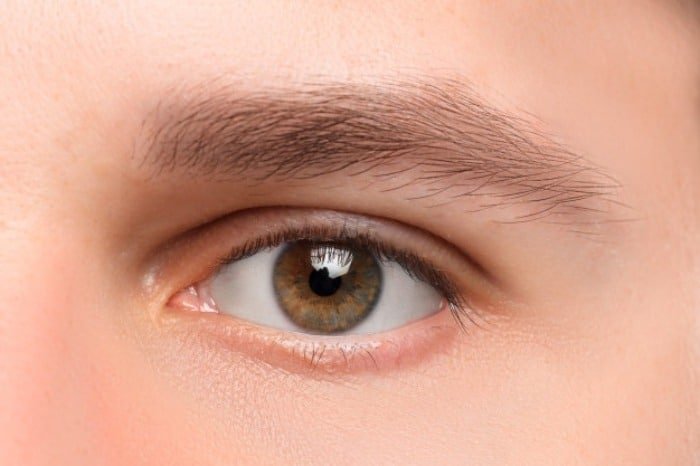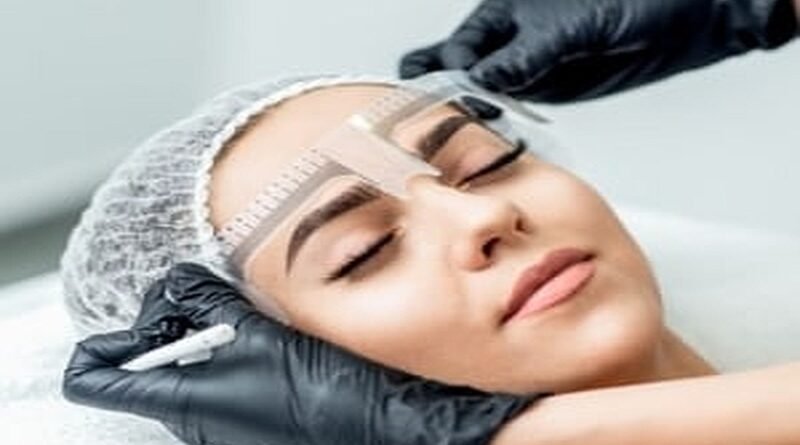Everything You Need to Know About Eyebrow Decapage Instead of Tattooing: Methods and Care
Everything You Need to KnowAbout Eyebrow DecapageUnderstand
These days, visiting beauty salons and clinics is very popular, and many women are trying different methods to enhance their appearance. One of the most popular procedures is correcting eyebrow shapes and flaws, which leads people to choose various types of eyebrow tattoos. While some are satisfied with the result, others feel unhappy with their eyebrow color or shape.
Sometimes, the chosen color may not suit the person’s skin tone, or any number of reasons might lead someone to want to touch up their eyebrows again. If you’ve experienced these issues, stay with us in this beauty and makeup section on the world of fashion.SelmaDermaJoin us to learn useful information about eyebrow tattoos and how to fix their issues, so you can take informed steps towards your beauty.
What is Decapage?
There is a significant difference between decapage and tattoo removal. Decapage means correcting an eyebrow’s color by injecting a new color into the skin, while removing a tattoo means extracting the color from beneath the skin.Removing Tattoosfrom the eyebrows means suctioning the color out from under the skin.
During the decapage process, we follow all the steps that are taken in eyebrow tattooing, and no special materials or tools other than tattoo supplies are needed. The only difference is that the chosen color is different.
When is Decapage Necessary?
You might wonder when decapage is needed. The answer is when micro-pigmentation or eyebrow tattoos fade to a light green or ash color, or there are other impurities in the eyebrow. Decapage is also necessary if you wish to lighten your eyebrows. An important factor for successful decapage is the correct choice of colors.

Color Selection in Decapage
The use of one or multiple colors in decapage depends on the eyebrow colors that need correction. If different parts of the eyebrow are different colors, you need to work with those colors and choose neutral tones for decapage.
During the decapage process, the choice of colors should not make the person’s face look unnatural. That is why complementary colors are used to achieve the desired neutral tone.
It is possible for a client to have a black or dark ash tattoo and want to change it to a light brown or any type of brown. In such a case, decapage is needed. However, if the eyebrow color is very dark, a preliminary removal process may be necessary before decapage, as a dark eyebrow might not be fixable with just decapage and can make the client’s skin look prominent.Brown HairOld tattoos that have turned red should not be treated only with a neutralizer for decapage, as this can lead to a bad color. Therefore, for red eyebrows, a mix of 50% neutralizer and 50% chosen color is used.
Key Points about Using Neutralizing Colors
The neutralizer for a red eyebrow tattoo is olive green.
- If there is a high blue or ash tone, the neutralizer used is orange.
- For ash with a high blue tone, red is used as a neutralizer.
- If the tattoo color has turned purple, the neutralizer used is yellow.
- With the information provided, you should now have a clear understanding of how decapage works. Therefore, with the right color choices, you can achieve the desired result.
Steps to Perform Eyebrow Decapage

First, we will explain how to perform decapage. Just like in eyebrow tattooing, the first step in decapage is numbing the skin, followed by selecting the appropriate needle for the person’s skin. If the eyebrow is thin, a three-prong needle is used; if it is wider, a five-prong needle is needed.
All the colors used in decapage are tattoo colors, and they are just raw and pure colors.
Decapage can be performed in two ways:
The first method considers the client’s situation. For example, if they do not have enough time for frequent visits and are in a hurry, decapage and the primary color can be done in one session. However, make sure to inform the client that it’s best to schedule at least two sessions for the desired outcome.
- The second method is for clients who have enough time to visit and are patient for satisfactory results. In this method, decapage is done in three or four sessions over a 20-day period. If you need decapage, this second method is the best as it ensures good results through multiple sessions.
- Additional Points on Eyebrow Decapage
For thick eyebrows, the decapage is first done according to the skin type and texture, using a technique that reaches a depth of 0.8 to 1.5 mm with an angle of 75 degrees, bringing the color to the outer layer of the epidermis. Then, with a back-and-forth motion of about one centimeter, the process is repeated 5 to 10 times depending on how light the color should be. This is done using three and five needles and requires a moderate hand speed and a relatively fast machine speed.
It’s clear that skin type greatly impacts needle depth, and if you have sensitive skin, a shallower penetration should be used.

After 25 days, once sufficient rest and skin recovery have occurred, if you are satisfied with the new color, you can perform hair strokes with the client’s desired color.
Note that old and dark colors will never be eliminated with just one decapage session, so at least two to three sessions are required.
- Another point to be aware of is that performing tattooing and decapage simultaneously is a mistake. If you are in the process of lightening an old color, you can no longer apply pigment to your skin at the same time.
- In specific cases, such as with slightly discolored tones, it may be possible to perform hair strokes or tattooing and decapage simultaneously. This means that with half of the neutralizing variances combined and the new color tone, tattooing and decapage can be completed in one session. However, for darker discolorations, it may sometimes require three decapage sessions to change the tone.
At the end of the process, since decapage is usually done with yellow, red, and orange colors, for a nicer appearance, the final step can include a mix of light yellow and honey tones to avoid dark and loud orange and red shades. It’s worth mentioning that honey color alone can balance strong orange and red tones and is simply used to lighten dark and discolored areas after the session.
A key point to remember is that if you have decapaged a dark eyebrow but it still appears dark, you should know that this is due to improper pressure while applying, so the process must be repeated with the correct pressure.
Eyebrow Decapage

